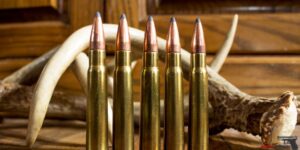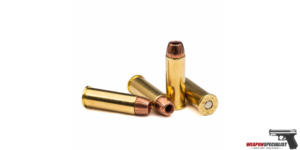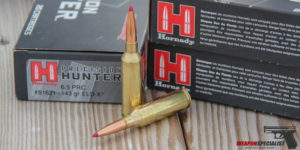When it comes to choosing between .222 Remington and .223 Remington, many hunters and shooters find themselves in a dilemma. Both cartridges are popular and offer excellent accuracy, but they have some differences that can make one more suitable than the other depending on the intended use.
The .222 Remington was introduced in 1950 by Remington Arms and was initially designed for varmint hunting. It has a bullet diameter of .222 inches and a case length of 1.85 inches.
The .223 Remington, on the other hand, was developed by Remington in 1964 as a military cartridge and was later adapted for civilian use. It has a slightly longer overall case-length of 2.260 inches and a bullet diameter of .224 inches.

What are .222 Remington?
The .222 Remington is a centerfire cartridge that was introduced in 1950 by Remington Arms. It is a small-bore rifle cartridge with a bullet diameter of .224 inches. The cartridge is designed for small game hunting and varmint shooting.
The .222 Remington is known for its flat trajectory, high velocity, and low recoil. It is also known for its accuracy and is often used in target shooting and benchrest competitions.
The .222 Remington has a case length of 1.71 inches and an overall length of 2.26 inches. It has a maximum pressure of 50,000 psi and a muzzle velocity of around 3,000 feet per second. The cartridge is commonly used in bolt-action rifles and is also available in some semi-automatic rifles.
What are .223 Remington?
The .223 Remington is a centerfire cartridge that was introduced in 1964 by Remington Arms. It is a small-bore rifle cartridge with a bullet diameter of .224 inches. The cartridge is designed for varmint hunting, small game hunting, and target shooting.
The .223 Remington is known for its flat trajectory, high velocity, and low recoil. It is also known for its accuracy and is often used in target shooting and benchrest competitions.
The .223 Remington has a case length of 1.76 inches and an overall length of 2.26 inches. It has a maximum pressure of 55,000 psi and a muzzle velocity of around 3,200 feet per second. The cartridge is commonly used in semi-automatic rifles, but is also available in bolt-action rifles.
Overall, both the .222 and the .223 are versatile cartridges that are used for hunting and target shooting. They are both known for their accuracy, flat trajectory, high velocity, and low recoil.
The main difference between the two cartridges is the case length and maximum pressure. The .223 Remington has a slightly longer case length and a higher maximum pressure than the .222 Remington, which gives it a slight advantage in velocity and energy.
Quick 222 vs 223 Comparison Table
| Specifications | .222 Remington | .223 Remington |
|---|---|---|
| Parent case | .222 Remington Magnum | .222 Remington |
| Bullet diameter | .224 in (5.7 mm) | .224 in (5.7 mm) |
| Neck diameter | .253 in (6.4 mm) | .253 in (6.4 mm) |
| Shoulder diameter | .355 in (9.0 mm) | .354 in (9.0 mm) |
| Base diameter | .376 in (9.6 mm) | .376 in (9.6 mm) |
| Rim diameter | .378 in (9.6 mm) | .378 in (9.6 mm) |
| Case length | 1.710 in (43.4 mm) | 1.760 in (44.7 mm) |
| Overall length | 2.240 in (56.9 mm) | 2.260 in (57.4 mm) |
| Rifling twist | 1:12 in | 1:7 to 1:9 in |
| Muzzle velocity | Varies by load, typically around 3,000 fps | Varies by load, typically around 3,100-3,200 fps |
| Energy | Varies by load, typically around 1,000-1,100 ft-lbs | Varies by load, typically around 1,200-1,300 ft-lbs |
| Commonly used in | Varmint hunting, target shooting | Varmint hunting, target shooting, military applications |
History of 222 vs 223
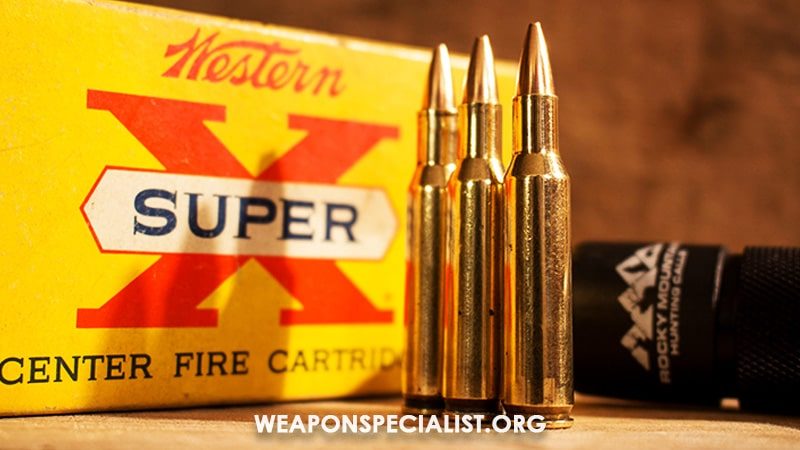
Development of 222
The .222 Remington was developed in 1950 by Mike Walker. He was in a shooting competition in upstate New York using a Remington Model 722 rifle. This led to the adoption of the .222 rounds that were designed for varmint hunting and benchrest shooting.
The .222 Remington was designed to be an accurate, flat-shooting cartridge with low recoil. It was initially chambered in the Remington Model 722 bolt-action rifle and later in other rifles such as the Ruger No. 1 and the Savage Model 340.
The .222 Remington was popular among varmint hunters and benchrest shooters due to its accuracy and low recoil. However, it was not as versatile as other cartridges and was eventually overshadowed by the .223 Remington.
Development of 223
The .223 Remington was developed in 1957 by Remington Arms. It was based on the .222 Remington Magnum cartridge, which was itself based on the .222 Remington. The .223 Remington was designed for military use as a replacement for the .308 Winchester cartridge.
The .223 Remington was initially chambered in the AR-15 rifle, which was adopted by the US military as the M16 rifle. The .223 Remington was designed to be a lightweight, high-velocity cartridge with good accuracy and low recoil. It was also designed to be compatible with the AR-15/M16 platform.
The .223 Remington quickly became popular among military and law enforcement agencies due to its lightweight, high-velocity, and low recoil characteristics. It was also popular among hunters and sport shooters due to its versatility and availability of ammunition.
Comparison of .222 vs .223
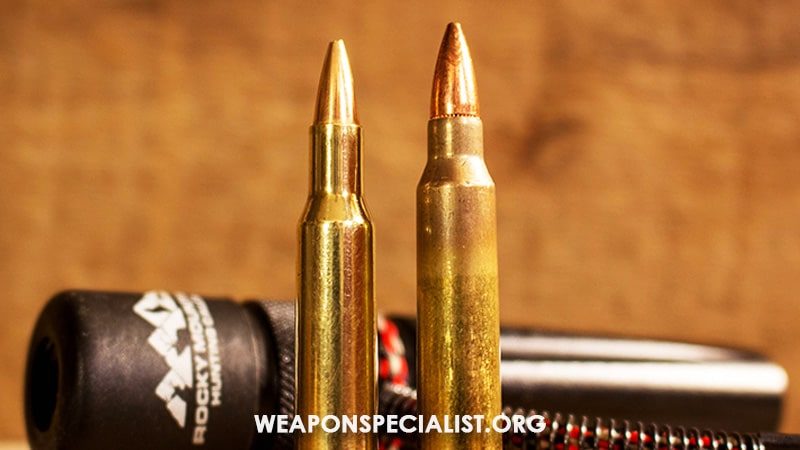
Ballistics
The .222 and .223 are both capable cartridges that offer excellent ballistics. The .223 Remington is a slightly longer case than the .222 Remington, which allows it to hold a little more powder.
As a result, the .223 Remington typically has a slightly higher velocity and more energy than the .222 Remington. However, the .222 Remington is known for its exceptional accuracy and flat trajectory, making it a great choice for varmint hunting and target shooting.
When it comes to bullet weight, the .223 Remington can handle heavier bullets than the .222 Remington. The .223 Remington can shoot bullets up to 77 grains, while the .222 Remington is best suited for bullets weighing between 35 and 55 grains.
The twist rate of the barrel is an important factor to consider when deciding on the right bullet weight for your cartridge. For example, a 1:9 twist rate is ideal for shooting heavier bullets in a .223 Remington, while a 1:14 twist rate is better suited for lighter bullets in a .222 Remington.
Accuracy
Both the .222 and .223 are known for their accuracy. The .222 Remington is considered one of the most accurate cartridges ever made, thanks to its small case capacity and flat trajectory.
The .223 Remington is also a highly accurate cartridge, but it is more versatile than the .222 Remington due to its ability to handle heavier bullets and longer ranges.
When it comes to accuracy, the quality of the rifle and ammunition can make a big difference. A well-made rifle with a quality barrel and trigger, paired with good ammunition, can make either cartridge a highly accurate option for varmint hunting or target shooting.
Recoil
Both the 222 vs 223 are relatively low-recoil cartridges. The .222 Remington has less recoil than the .223 Remington due to its smaller case capacity and lighter bullet weight. However, the difference in recoil between the two cartridges is minimal and not likely to be noticeable to most shooters.
The low recoil of both cartridges makes them a great choice for beginners or those who are sensitive to recoil. It also allows for faster follow-up shots and improved accuracy, as the shooter is less likely to be thrown off target by recoil.
Uses of 222 and 223
Military and Law Enforcement Applications
The .223 Remington cartridge is a popular choice for military and law enforcement applications due to its versatility and effectiveness.
It is commonly used in rifles such as the M16 and AR-15, and is known for its accuracy and reliability. The cartridge’s high velocity and flat trajectory make it well-suited for long-range engagements, while its light recoil allows for quick follow-up shots.
Additionally, the .223 Remington can be chambered in compact rifles, making it a popular choice for close-quarters combat situations.
The .222 Remington cartridge, on the other hand, is not commonly used in military or law enforcement applications. While it is known for its accuracy and low recoil, its smaller bullet size and lower velocity make it less effective at longer ranges. It is primarily used for varmint hunting and target shooting.
Hunting Applications
Both the .222 and .223 cartridges are popular choices for varmint hunting due to their accuracy and low recoil.
The .223 Remington is capable of handling heavier bullets, making it better suited for larger varmints such as coyotes and foxes.
The .222 Remington, on the other hand, is better suited for smaller varmints such as groundhogs and prairie dogs.
Additionally, the .223 Remington is a popular choice for deer hunting, particularly in areas where regulations prohibit the use of larger calibers.
It is capable of taking down deer at reasonable distances, although hunters should exercise caution and ensure that shot placement is precise.
Sport Shooting Applications
Both the .222 and .223 cartridges are popular choices for sport shooting, particularly in the disciplines of benchrest and varmint shooting.
The .222 Remington’s accuracy and low recoil make it a popular choice for beginners and experienced shooters alike, while the .223 Remington’s versatility and effectiveness make it a popular choice for more advanced shooters.
In addition to benchrest and varmint shooting, the .223 Remington is also commonly used in 3-gun competitions. Its high velocity and flat trajectory make it well-suited for long-range engagements, while its light recoil allows for quick follow-up shots.
Conclusion
Both the 222 vs 223 cartridges have their own advantages and disadvantages, making it difficult to determine which one is better.
However, the .223 Remington is the more popular and widely used of the two due to its higher velocity and longer overall case-length, which allows for better accuracy and range.
Additionally, the .223 Remington has a larger variety of bullet weights and styles available, making it a more versatile cartridge for different shooting applications.
On the other hand, the .222 Remington has less recoil, muzzle blast, and barrel erosion, which makes it a great option for target shooting and varmint hunting. It also has a flatter trajectory and better accuracy at shorter ranges.
Ultimately, the choice between the .222 Remington and .223 Remington will depend on the shooter’s specific needs and preferences. However, it is important to note that both cartridges have proven to be reliable and effective for their intended purposes, and either one can be a great choice for a variety of shooting applications.
Last Updated on November 21, 2023 by


